Related Research Articles
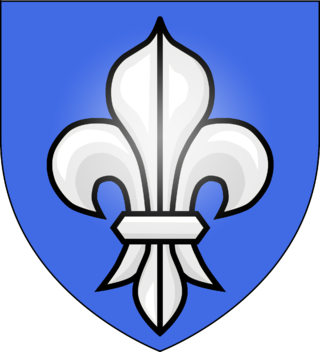
Earl of Bristol is a title that has been created twice in British history, and was attested once before. Antiquaries Carew and Williams refer to Reginald de Dunstanville as Earl of Bristol. However, the first confirmed creation came in the Peerage of England in 1622 in favour of the politician and diplomat John Digby who served for many years as Ambassador to Spain, and had already been created Baron Digby of Sherborne, in the County of Dorset, in 1618, also in the Peerage of England. Digby was the brother of Sir Robert Digby of Coleshill, Warwickshire, whose son Robert Digby became 1st Baron Digby of Geashill in the Peerage of Ireland in 1620..
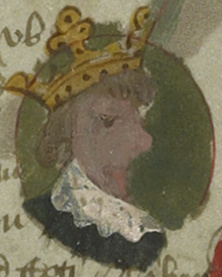
Camber, also Kamber, was the legendary first king of Cambria, according to the Geoffrey of Monmouth in the first part of his influential 12th-century pseudohistory Historia Regum Britanniae. According to Geoffrey, Cambria, the classical name for Wales, was named for him.

Gurgustius was a legendary king of the Britons as accounted by Geoffrey of Monmouth. He came to power in 788BC.
Dyfnwal Moelmud was accounted as an early king and lawmaker among the Welsh, credited with the codification of their standard units of measure. He also figures as a legendary king of the Britons in Geoffrey of Monmouth's pseudohistorical History of the Kings of the Britons.

The Red Book of Hergest, Oxford, Jesus College, MS 111, is a large vellum manuscript written shortly after 1382, which ranks as one of the most important medieval manuscripts written in the Welsh language. It preserves a collection of Welsh prose and poetry, notably the tales of the Mabinogion and Gogynfeirdd poetry. The manuscript derives its name from the colour of its leather binding and from its association with Hergest Court between the late 15th and early 17th century.

In Arthurian legend, Gorlois of Tintagel was the Duke of Cornwall. He was the first husband of King Arthur's mother Igraine and the father of her daughters, Arthur's half-sisters. Her second husband was Uther Pendragon, the High King of Britain and Arthur's father, who marries her after killing him.

The National Library of Wales, in Aberystwyth, is the national legal deposit library of Wales and is one of the Welsh Government sponsored bodies. It is the biggest library in Wales, holding over 6.5 million books and periodicals, and the largest collections of archives, portraits, maps, and photographic images in Wales. The Library is also home to the national collection of Welsh manuscripts, the National Screen and Sound Archive of Wales, and the most comprehensive collection of paintings and topographical prints in Wales. As the primary research library and archive in Wales and one of the largest research libraries in the United Kingdom, the National Library is a member of Research Libraries UK (RLUK) and the Consortium of European Research Libraries (CERL).

The Black Book of Carmarthen is thought to be the earliest surviving manuscript written solely in Welsh. The book dates from the mid-13th century; its name comes from its association with the Priory of St. John the Evangelist and Teulyddog at Carmarthen, and is referred to as black due to the colour of its binding. It is currently part of the collection of the National Library of Wales, where it is catalogued as NLW Peniarth MS 1.
Reginald de Dunstanville was an Anglo-Norman nobleman and an illegitimate son of King Henry I (1100–1135). He became Earl of Cornwall and High Sheriff of Devon.
Lewys Glyn Cothi, also known as Llywelyn y Glyn, was a prominent 15th-century Welsh poet who composed numerous poems in the Welsh language. He is one of the most important representatives of the Beirdd yr Uchelwyr or Cywyddwyr ("cywydd-men"), the itinerant professional poets of the period between the 1284 Statute of Rhuddlan and c. 1600.

The Book of Llandaff, is the cartulary of the cathedral of Llandaff, a 12th-century compilation of documents relating to the history of the diocese of Llandaff in Wales. It is written primarily in Latin but also contains a significant amount of Old and Middle Welsh names and marginalia.

Condor was a legendary Cornish nobleman. The first known mentions of Condor are from heralds and antiquarians in the late sixteenth century, who recorded claims that he had been earl of Cornwall at the time of the Norman Conquest in 1066, and paid homage to William the Conqueror to keep his position. William Hals speculated that he may have supported the rebels at the Siege of Exeter (1068) and lost his earldom; much of Cornwall was given to William's Norman supporters soon afterwards. Condor's son Cadoc may have regained the title under Henry I, and later passed it through his daughter to Reginald de Dunstanville.
Clemen ap Bledric was a 7th-century King of Dumnonia.
Bledric ap Custennin was a 6th- and 7th-century ruler of Dumnonia.
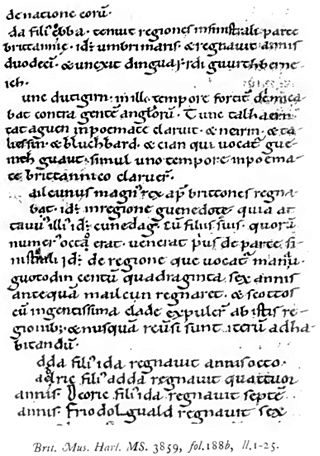
The Harleian genealogies are a collection of Old Welsh genealogies preserved in British Library, Harley MS 3859. Part of the Harleian Library, the manuscript, which also contains the Annales Cambriae and a version of the Historia Brittonum, has been dated to c. 1100, although a date of c.1200 is also possible.
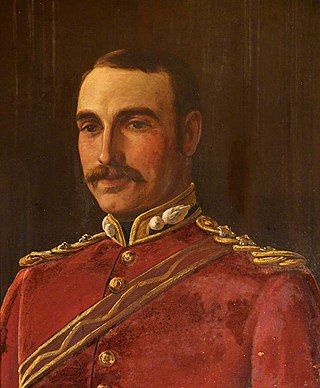
Colonel Sir Joseph Alfred Bradney, was a British soldier, historian and archaeologist, best known for his multivolume A History of Monmouthshire from the Coming of the Normans into Wales down to the Present Time.
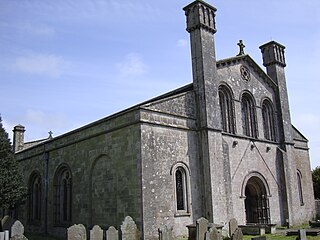
The White Book of Hergest was an important Welsh manuscript compiled in c. 1450. It contained many Welsh poems and prose texts and was a significant source for several antiquaries of the 17th and 18th centuries, but disappeared in the early 19th century, probably being destroyed in a fire in a London bookbinder's shop in around 1810.
Thomas Wiliems was a Welsh-language antiquarian.
References
- ↑ Williams, John. Llyfr Baglan: or The Book of Baglan. Compiled Between the Years 1600 and 1607. Edited by Joseph Alfred Bradney. London: Mitchell, Hughes and Clarke, 1910. p80
- ↑ Legend of Lewis: Bibliography Retrieved on 2008-09-04.